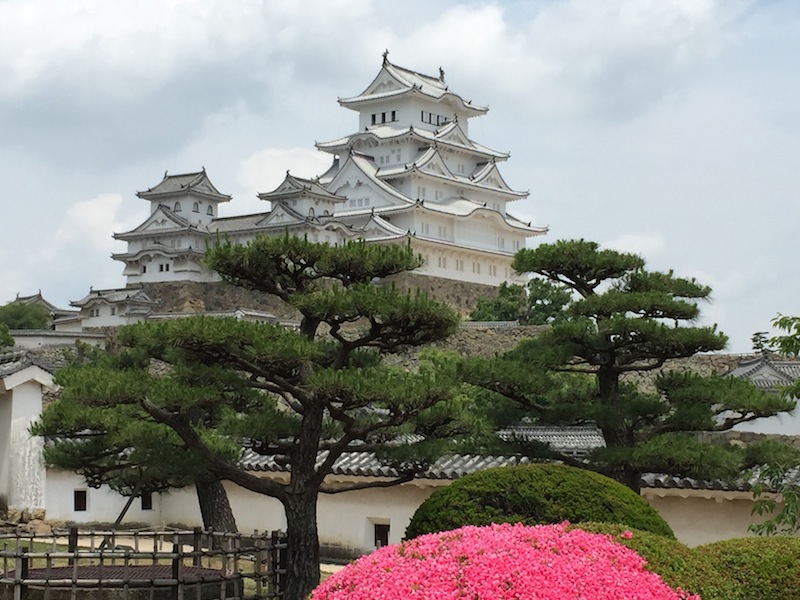I’m a huge James Bond fan so I couldn’t go all the way to Japan without paying homage to a castle that 007 himself visited back in the 1960s.
The film was You Only Live Twice, Bond was Sean Connery and Himeji Castle was a ninja training school that he visited with the boss of the Japanese secret service, Tiger Tanaka. Ahead of his assault on Blofeld’s not-so-secret hide-out in a dormant volcano, the heroic agent was trained in martial arts by Tiger’s top-notch forces.
We travelled to this extraordinary building on the Bullet Train from Kyoto, a quick 45-minutes of impressive efficiency, helped along by staff who enjoyed a good bow as they entered each carriage to check our tickets. Not for us an escort of spies and civil servants…
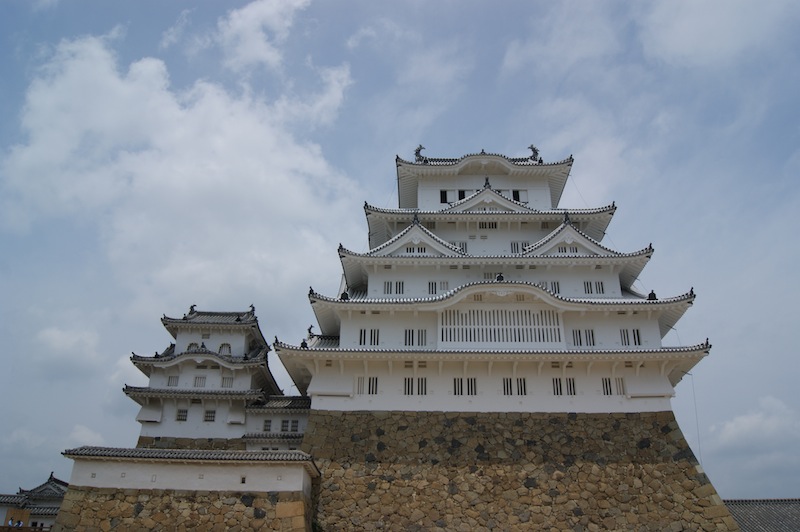
We spotted the castle as we drew into the city, standing majestically on a hill above the unattractive urban sprawl of Himeji. Its white plaster wings, which inspired its nickname of the White Heron Castle, soared proudly at each storey.
We were lucky. Only a few months previously a major restoration programme that had seen the castle keep encased in tarpaulin had been completed, allowing it to be seen in all its glory for the first time in several years. As one of the few original wooden castles left in Japan – most similar buildings are modern restorations – this was a much talked about project and the big reveal had been eagerly anticipated.
We walked through the city up a wide boulevard of little architectural merit to the castle grounds, along with plenty of other tourists but grateful that we’d avoided the huge crowds that apparently visit at weekends.
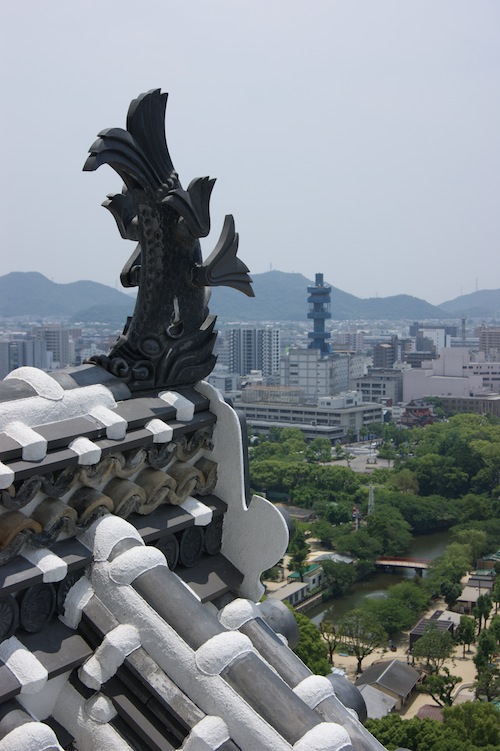
Our route through the site was rigidly prescribed and inside the 16th century building we had to walk about on the shiny wooden floors in our stockinged feet to avoid causing too much damage. In truth, the inside doesn’t match the drama of the exterior and there’s little in the way of furniture, the structure itself being the star of the show. A few panels dotted around tell the castle’s story and reveal more about the recent restoration. At the heart of the building stand two giant wooden pillars that run from top to bottom, the spine that supports everything else. Centuries old, they would’ve taken a hell of a lot of felling.
We climbed up from one storey to another amid the crowds, taking in views from the many windows and admiring the beautifully crafted roof tiles. We also saw once secret panels hidden in the walls, where a soldier or two would’ve waited to pounce on any invaders who’d broken through the building’s defences. I was amazed to see photos of the castle standing amid a wasteland of bomb damage, one of the district’s few survivors of Allied bombing during the Second World War. Apparently it had been dressed in camouflage netting in an effort to keep it hidden.
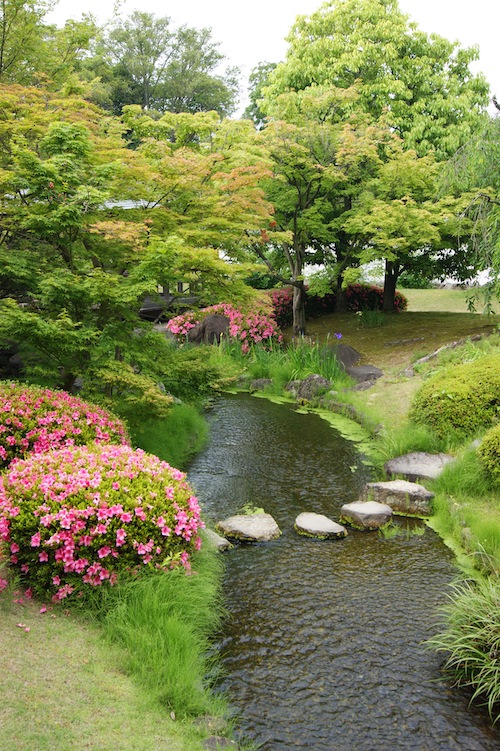
The higher we got, the steeper the stairs, the more precarious it felt, the more nervous I became. At the top we found a shrine, which some locals made offerings to. Walking down was even more nerve-wracking and it was no surprise next day to wake with terrible back pains brought on by the tension.
Outside, in the sultry heat, we drank in views of this immense and spectacular structure, snapped endless photos and then went off to tour some of the castle outbuildings. The highlight of the grounds turned out to be a collection of stunning gardens, all slightly different but all uniquely Japanese. As elsewhere on our travels through the country, I was overwhelmed by their beauty, the artistry, the talent of the designers and gardeners. Away from the castle itself, the gardens offered a brief respite from the crowds, an hour or so of peace.
We had katsu in a touristy restaurant nearby, organised with brutal efficiency by an army of middle-aged waitresses who must surely have come bottom of their customer service class. And with the city of Himeji offering little else, we jumped on the train back to Kyoto.
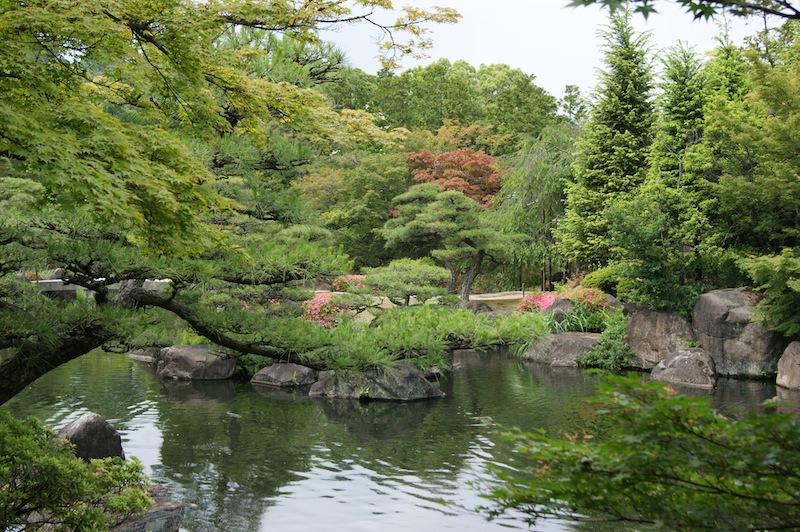
In the evening we returned to Kyoto’s Pontocho – the atmospheric alley running from Shijo-dori to Sanjo-dori that’s famous for its bars and restaurants – and wandered up and down looking for somewhere to eat. Sometimes having too much choice is a bad thing and we ended in a place that specialised in tempura, which was nothing more than OK.
Then we tracked down a place called Sama Sama, at the end of an alleyway off one of the main streets. Run by a delightful Indonesian guy, we took off our shoes and settled into the womb-like warmth of his small bar, supping Indonesian beers and chatting to a number of tourists who’d also landed for the night. Our host was a fascinating chap who’d lived in Japan for years. Talking to him and a Swiss couple, I got slowly and pleasantly drunk.

